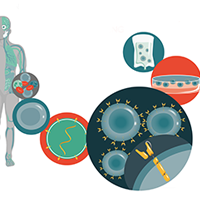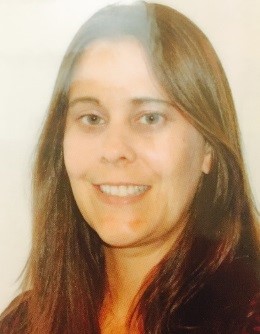Challenges & opportunities for manufacturing autologous cellular therapies such as CAR-T cells
Cell Gene Therapy Insights 2017; 3(4), 261-265.
10.18609/cgti.2017.029
Could you explain briefly the process of manufacturing an autologous cell therapy such as CAR-T cells?
For most of the autologous cell therapies, the first step is cell procurement. Cells are procured via leukapheresis, which is a procedure in which white blood cells (leukocytes) are obtained from the patient’s blood while returning the remainder of the blood to the circulation. Once the starting material or cells have been procured from the patient then there are multiple options for manufacturing depending on the target indication. Some groups start the manufacturing process with a more heterogeneous population of cells, for instance, the peripheral blood mononuclear cells (PBMCs). Others may enrich for lymphocytes and some others might actually enrich for T cell subsets. Therefore the starting material may vary for different manufacturing processes.
After initial isolation of the cells, T cells need to be activated. Activation not only enables the cell to proliferate but also increases the ability of the vector to integrate into the genome, thereby increasing transduction efficiency. Lentiviral vectors are known for their ability to transduce quiescent cells, however introducing vector after activation increases the percent of cells that are transduced. For retroviral vectors, activation is required for transduction. Activation is most often performed on Day 0, when the cultures are initiated and can be achieved in multiple ways. The most common way is activation through the TCR using immobilized anti-CD3 and anti-CD28 monoclonal antibodies to deliver the two signals required for activation and proliferation. The use of CD3/CD28 for activation will preferentially expand your CD4 cells. If you are trying to activate and expand cytotoxic CD8, some groups may choose to activate with CD3 alone or with CD3 plus alternative co-stimulatory molecules such as 41BBL or OX40L.
Culture initiation and activation is followed by transduction where the T cells are incubated with the viral vector encoding the CAR. A CAR is a chimeric antigen receptor, that is comprised of a extracellular antigen recognition domain, such as ScFv fused to an intracellular signaling domain. Once a cell has been activated and transduced, the cells continue to divide to make more cells expressing the CAR on the surface. Recognition and engagement of CAR-T cells with target antigen is what triggers the intracellular signaling domains. The intracellular signal is what allows the CAR-T cells to then start the process of either cytotoxic killing or secreting cytokines that will recruit other immune cells to the site.
The process of transduction also may vary depending on the manufacturing process. Transduction is performed normally anytime between day 0 and day 3. Some groups may perform transduction on day 0, some on day one and yet others will add the vector on day 2 or day 3. It depends on what is optimal for your particular process or your particular vector. The number of transductions can also vary depending on the potency of the vector. Some will do just 1 hit if it is a highly potent vector and some will have to do 2 hits to get enough cells transduced to expand for a therapeutic dose.
After transduction, basically you’re just trying to keep the cells happy for expansion. Once cells are activated, you have a small window of time for proliferation before they go back to a resting state, so you want to keep them in log phase to be able to maximize the number of clones of that T cell that is genetically modified. Usually that time of active proliferation and expansion ranges anywhere from 7 to 14 days, depending again on the manufacturing process, the target dose and how the T cells are responding to activation.
Following expansion, the cells are harvested, washed, formulated and cryopreserved. After extensive safety and release testing they are finally ready to be infused back into the patient.
What are some of the major determinants of the commercial feasibility of CAR-T cells?
Having access and utilizing the patient material for true characterization and development is the key consideration for the commercial feasibility of CAR-T cells. When going into Phase 1 clinical trials, one has to always keep in mind that the development of the manufacturing process has been done primarily on normal donors. There has been little to no opportunity to understand how the process performs with starting material from patients. Therefore the process has to be very flexible early on. It is only at that moment after phase 1 that the true development of your process can be done where you may have access to patient material and you can understand what variables within the patient cell material needs to be optimized in the manufacturing process. Once you understand your acceptable operating ranges for your target patient population, you can then start to standardize the process and set specifications for your critical quality attributes. Standardization is key to routinely and robustly manufacture the drug product at multiple sites, which will be needed for commercialization.
With respect to manufacturing CAR-T cells, what are the key challenges around scale up?
I think the key challenge is that you have a different starting material each time, and each patient’s cells act differently in culture. Therefore, you have to invest a lot in in-process monitoring and in-processing quality control assays. You have to be able to understand what those assays are and how to interpret the results, and be able to adjust appropriately. Usually the assays require skilled technical people to understand and they are time consuming. Sometimes you may need results from the assay real time before proceeding to the next step of the manufacturing process. Therefore, being able to write that into a GMP manufacturing process and having that real-time process monitoring is a challenge. Being able to automate those in-process assays to give you a quick read on how that culture is doing and in a simple manner is the biggest challenge.
Could you provide a brief overview of the active T-cell programs Bluebird Bio are running – what safety and efficacy data have been obtained to date?
We have partnered with Celgene to develop CAR-T product candidates against B-cell maturation antigen (BCMA), which is a cell surface protein that is expressed in normal plasma cells and most multiple myeloma cells, but absent in normal tissues. We and Celgene brought our first anti-BCMA CAR-T into the clinic in February 2016 and presented the first early clinical data in November. The data that have been released publicly have shown an encouraging safety profile, with no grade 3 or grade 4 cytokine release syndrome (CRS), a common side effect of CAR-T products. In addition, we have a fully owned pipeline outside of BCMA exploring new CAR-T and TCR targets in both solid tumors and hematological malignancies.
What are some of the efforts being employed by Bluebird Bio to optimize the manufacturing process at commercial scale?
For bluebird bio right now, our products that are furthest along in the clinic, are the products for our HSC platform, which is where we’re genetically modifying hematopoietic stem cells for the treatment of monogenic diseases such as sickle cell anemia, beta-thalassemia and cerebral adrenoleukodystrophy. Currently, our cancer immunotherapy research group is focused on the next generation of T cell engineering and creating a pipeline of T cell product candidates to treat a wide variety of liquid and solid tumor cancers. In regard to our current CAR-T product in phase 1, we are collaborating with Celgene to utilize information from our current clinical trials to further optimize the platform for next generation products.
How important is automation to the future of cellular therapy manufacture?
I think automation will be important in improving the robustness of manufacturing. However, automation is not as simple as you would expect for cellular therapies. It is much more challenging to incorporate the type of automation where you go in, put the cells into a machine, hit a button and walk away. For autologous cell therapies, because the product is different every single time, automation is never simple.
In my opinion, automation needs to be modular for autologous cell therapies. Most companies don’t plan to just have one product but are trying to have a pipeline of products that are going to look at different indications and when you get into different indications, the way the cells come in can be affected. Therefore, one instrument that works well for a particular unit of operation in one indication may not work the same for a different indication. By modulating the process and automating each unit operation, you can then tweak it to be able to build a flexible process for the particular modality you’re targeting. It’s not one size fits all. An all in one instrument might fit for one particular product, but if you want additional products you would have to customize a new instrument for every single product. That’s not feasible. Instead you should aim to automate specific operations units such as isolation and washing, enrichment, expansion, etc. and then you can tweak and optimize each process as you have new products coming through the pipeline.
In terms of regulation what makes adoptive cell therapies different from conventional off-the shelf therapies?
It’s very different because one of the starting materials is the patient’s cells and it is different every single time you go to manufacture the drug product. In GMP manufacturing for small molecules or biologics, you can optimize your system because you’re starting with the same raw materials and critical reagents. But when your starting material is different every single time as in the case of adoptive cell therapies, it’s very hard to make a batch record that is standardized because you are still learning about the process. Therefore, you need to maintain some form of flexibility within the process to ensure you can do what is best for the cells. This type of subjective decision making is not accepted in GMP. Things need to be black and white, with no gray areas.
That’s where I think the regulatory challenges are. It’s a completely different type of therapy that requires manufacturing processes that are not fully defined and still need to be optimized. It’s hard to fit under the same guidelines as other biologics and we need additional guidelines on how to regulate this type of product. We need to think outside the box to do that and use a risk-based approach, otherwise you won’t be able to get that product to commercialization.
How critical are global regulatory collaboration and harmonization for the successful development of this therapeutic modality?
Although it is very critical, I think it’s too early for global harmonization right now, because we are still learning a lot on the development of these products and we just don’t have enough patients who have been treated collectively. We need to remain open and flexible. There’s also a lot of competition in the field and each company is striving hard to be able to have a unique manufacturing process. But in the end, all will have to come together to determine the critical components that have emerged as a result of all these trials and manufacturing processes and standardize that. For this entire field to progress, we’re eventually going to have to work together to understand what bits and pieces from all our collective ways of doing it is the best way moving forward for the patients. Collaboration between the US, EU, Japanese and Canadian regulators on advanced therapies is very helpful as they are all very supportive of innovation.
Affiliation
Dawn Maier
Associate Director, Cellular Process Development,
Bluebird Bio
This work is licensed under a Creative Commons Attribution- NonCommercial – NoDerivatives 4.0 International License.


